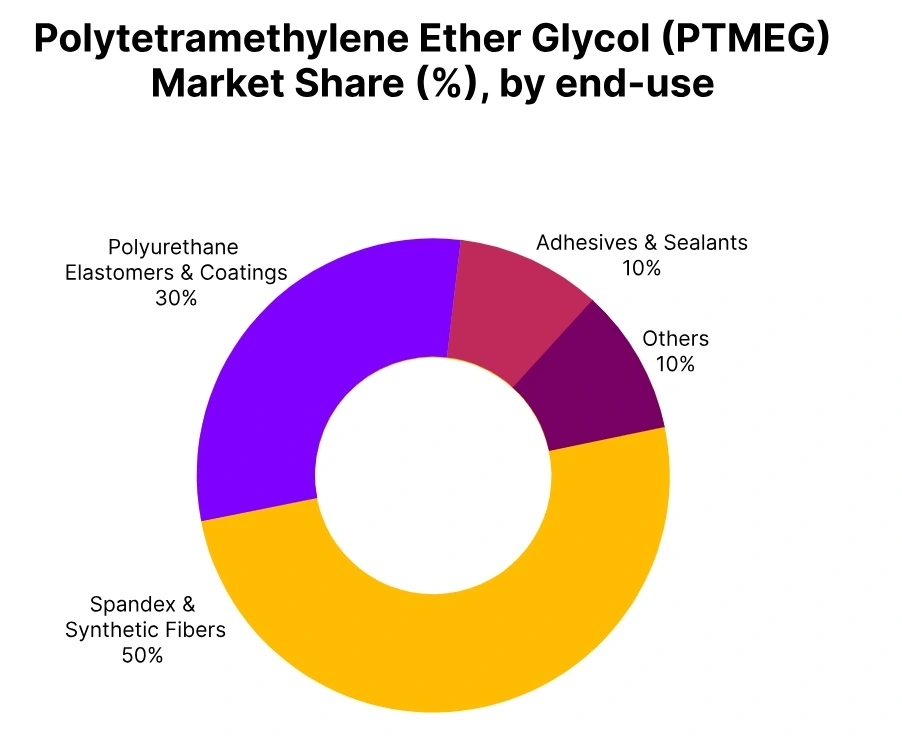Price-Watch’s most active coverage of Polytetramethylene Ether Glycol (PTMEG) price assessment:
- 1800 (MW) FOB Shanghai, China
- 1800 (MW) FOB Kaohsiung, Taiwan
- 1800 (MW) CIF Houston (China), USA
- 1800 (MW) CIF Mersin (China), Turkey
- 1800 (MW) CIF Santos (China), Brazil
- 1800 (MW) CIF Nhava Sheva (China), India
Polytetramethylene Ether Glycol (PTMEG) Price Trend Q3 2025
In Q3 2025, the global Polytetramethylene Ether Glycol (PTMEG) market experienced varying price trends across different regions. While Brazil and India saw notable price increases, regions like Taiwan and the USA saw slight declines. These price fluctuations were influenced by demand from sectors including textiles, automotive, and chemicals.
In September 2025, Polytetramethylene Ether Glycol (PTMEG) prices in countries like Brazil and India continued to show upward momentum, reflecting strong industrial demand. Meanwhile, countries like Taiwan and the USA experienced slight dips due to lower demand. The Polytetramethylene Ether Glycol (PTMEG) price trend in Q3 2025 was marked by regional disparities, influenced by sectoral needs and global market conditions.
China
Polytetramethylene Ether Glycol (PTMEG) Export prices FOB Shanghai, China, Grade- 1800MW.
Polytetramethylene Ether Glycol (PTMEG) prices in China appreciated by 1.8% in Q3 2025, supported by stable demand in key industries such as textiles, chemicals, and automotive. Despite global economic uncertainties, China’s manufacturing sectors demonstrated resilience, driving consistent demand for PTMEG. In September 2025, Polytetramethylene Ether Glycol (PTMEG) prices in China continued to mirror steady growth, buoyed by the ongoing industrial demand.
Polytetramethylene Ether Glycol (PTMEG) price trend in China showed moderate price hikes, driven by a relatively stable industrial environment and continued consumption of materials in crucial sectors. This steady growth indicated that China’s manufacturing base remained strong and that industrial demand for PTMEG was holding steady.
Taiwan
Polytetramethylene Ether Glycol (PTMEG) Export prices FOB Kaohsiung, Taiwan, Grade- 1800MW.
Polytetramethylene Ether Glycol (PTMEG) prices in Taiwan saw a decline of 3.3% in Q3 2025, mainly due to reduced demand from the textile and automotive industries, which saw slowdowns in production during this period. Taiwan’s heavy reliance on imports, coupled with weaker local consumption, contributed to the price decrease.
According to Price-Watch, in September 2025, Polytetramethylene Ether Glycol (PTMEG) prices in Taiwan continued to reflect this slowdown, with prices staying under pressure due to reduced industrial activity. The Polytetramethylene Ether Glycol (PTMEG) price trend in Taiwan mirrored the regional decline, driven by less demand in key industries. The overall market conditions suggested challenges in Taiwan’s industrial landscape, impacting PTMEG prices.
Turkey
Polytetramethylene Ether Glycol (PTMEG) Import prices CIF Mersin, Turkey, Grade- 1800MW.
Polytetramethylene Ether Glycol (PTMEG) prices in Turkey, importing from China, grew by 1.3% in Q3 2025. This increase was driven by steady demand in the textile and automotive sectors, which rely heavily on PTMEG for manufacturing. The rise in prices reflected Turkey’s industrial needs and the dynamics of import prices from China. In September 2025, Polytetramethylene Ether Glycol (PTMEG) prices in Turkey continued to show moderate growth, in line with global price trends.
Polytetramethylene Ether Glycol (PTMEG) price trend in Turkey was supported by industrial stability, with demand from key sectors sustaining the price increases. The growth in demand showed positive conditions for Turkey’s industrial sectors, particularly textiles and automotive.
India
Polytetramethylene Ether Glycol (PTMEG) Import prices CIF Nhava Sheva, India, Grade- 1800MW.
Polytetramethylene Ether Glycol (PTMEG) prices in India, importing from China, saw a significant increase of 5.0% in Q3 2025. The rise in prices was driven by strong demand from the textile and chemical industries, both of which are major consumers of PTMEG. India’s industrial growth, particularly in the textile sector, played a large role in supporting the price rise.
In September 2025, Polytetramethylene Ether Glycol (PTMEG) prices in India continued to reflect robust demand from these key industries, sustaining the price growth. Polytetramethylene Ether Glycol (PTMEG) price trend in India was marked by resilience, as industrial sectors continued to drive consistent demand for PTMEG, ensuring continued price increases.
Brazil
Polytetramethylene Ether Glycol (PTMEG) Import prices CIF Santos, Brazil, Grade- 1800MW.
According to Price-Watch, Polytetramethylene Ether Glycol (PTMEG) prices in Brazil increased by 9.3% in Q3 2025, marking a sharp increase driven by strong demand from the textile and chemical sectors, which continue to rely on PTMEG for manufacturing processes. Brazil’s industrial recovery, combined with riding consumption of raw materials, supported the price rise.
In September 2025, Polytetramethylene Ether Glycol (PTMEG) prices in Brazil continued to show upward momentum, reflecting continued growth in key industries. The Polytetramethylene Ether Glycol (PTMEG) price trend in Brazil showed a significant market rebound, with strong demand from the textile and chemical sectors helping to propel the price rise. This growth underscored Brazil’s recovery and strengthening industrial output.
USA
Polytetramethylene Ether Glycol (PTMEG) Import prices CIF Houston, USA, Grade- 1800MW.
Polytetramethylene Ether Glycol (PTMEG) prices in the USA, importing from China, declined by 0.2% in Q3 2025. This reduction was mainly due to softer demand from the automotive and textile sectors, which experienced slower production. Despite stable import activity, demand for PTMEG in the USA remained weaker, leading to a small price decrease.
In September 2025, Polytetramethylene Ether Glycol (PTMEG) prices in the USA remained subdued, reflecting the ongoing challenges in the key industries that consume PTMEG. The Polytetramethylene Ether Glycol (PTMEG) price trend in the USA showed a slight decline, influenced by reduced demand for the material in several sectors, particularly automotive and textile industries.





